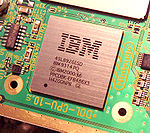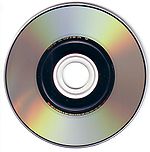I found this on Wikipedia so I don't know how reliable it is.
Technical specifications
Nintendo has released few technical details regarding the Wii system, but some key facts have leaked through the press. Though none of these reports has been officially confirmed, they generally point to the console as being an extension or advancement of the Nintendo GameCube architecture. More specifically, the reported analyses state that the Wii is roughly 1.5 to 2 times as powerful as its predecessor.[1][111] Based on the leaked specifications, the Wii is the least powerful of the major home consoles in its generation.
Wii specs given by Wikipedia: http://en.wikipedia.org/wiki/Wii#Technical_specifications
|
Processors:
Memory:
Ports and peripheral capabilities:
- Up to 16 Wii Remote controllers (10 in Standard Mode, 6 in One Time Mode,[117] connected wirelessly via Bluetooth)
- Nintendo GameCube controller ports (4)
- Nintendo GameCube Memory Card slots (2)
- SD memory card slot (supports SDHC cards as of System Menu 4.0)
- USB 2.0 ports (2)
- Sensor Bar power port
- Accessory port on bottom of Wii Remote
- Optional USB keyboard input in message board, Wii Shop Channel, and the Internet Channel (as of 3.0 and 3.1 firmware update)[118]
- Mitsumi DWM-W004 WiFi 802.11b/g wireless module[119]
- Compatible with optional USB 2.0 to Ethernet LAN adaptor
- 'AV Multi Out' port (See 'Video' section right)
Built-in content ratings systems:
|
Storage:
- 512 MB built-in NAND flash memory
- Expanded storage via SD and SDHC card memory (up to 32 GB)
- Nintendo GameCube Memory Card (required for GameCube game saves)
- Slot-loading disc drive compatible with 8 cm Nintendo GameCube Game Disc and 12 cm Wii Optical Disc
- Mask ROM by Macronix[120]
Video:
Audio:
Power consumption:
|
Gamecube specs given by Wikipedia: http://en.wikipedia.org/wiki/Nintendo_gamecube#Technical_specifications
|
Central processing unit:
System memory:
- 43 MB total non-unified RAM
- 24 MB MoSys 1T-SRAM (codenamed "Splash") main system RAM, 324 MHz, 64-bit bus, 2.7 GB/s bandwidth[12]
- 3 MB embedded 1T-SRAM within "Flipper"[13]
- Split into 1 MB texture buffer and 2 MB framebuffer[13]
- 10.4 GB/s texture peak bandwidth, 7.6 GB/s framebuffer peak bandwidth, ~6.2 ns latency[12]
- 16 MB DRAM used as buffer for DVD drive and audio, 81 MHz, 8-bit bus, 81 MB/s bandwidth[12]
Connectivity:
- 4 controller ports, 2 memory card slots
- MultiAV analog audio/video port: interlaced composite, Y/C(NTSC models only), and RGB(PAL models only) video, stereophonic analog audio
- Digital audio/video port: interlaced or progressive scan YCBCR video, RGB video, stereophonic I²S audio
- Resolutions: 480i, 576i, 480p
- High-speed serial ports: 2
- High-speed parallel ports: 1 (reserved for the Game Boy Player)
- Power supply output: 12 volts DC x 3.25 amperes
- Physical Measurements: 110 mm (H) × 150 mm (W) × 161 mm (D); [4.3"(H) × 5.9"(W) × 6.3"(D)]
|

IBM PowerPC "Gekko" processor
Graphics processing unit:
- 162 MHz "Flipper" LSI (co-developed by Nintendo and ArtX, acquired by ATI)
- 180 nm NEC eDRAM-compatible process
- 8 GFLOPS
- 4 pixel pipelines with 1 texture unit each[12]
- TEV "Texture EnVironment" engine (similar to Nvidia's GeForce-class "register combiners")
- Fixed-function hardware transform and lighting (T&L), 20 million polygons in-game[14]
- 648 megapixels/second (162 MHz × 4 pipelines), 648 megatexels/second (648 MP × 1 texture unit) (peak)
- Peak triangle performance: 20,250,000 32-pixel triangles/s raw and with 1 texture and lit
- 337,500 triangles a frame at 60 FPS
- 675,000 triangles a frame at 30 FPS
- 8 texture layers per pass, texture compression, full scene anti-aliasing[14]
- 8 simultaneous hardware light sources
- Bilinear, trilinear, and anisotropic texture filtering
- Multi-texturing, bump mapping, reflection mapping, 24-bit z-buffer
- 24-bit RGB/32-bit RGBA color depth
- Hardware limitations sometimes require a 6r 6g 6b 6a mode (18-bit color), resulting in color banding.
- 720 × 480 interlaced (480i) or progressive scan (480p) - 60Hz, 720 × 576 interlaced (576i) - 50Hz
- Integrated audio processor: Custom 81 MHz Macronix DSP
- Instruction memory: 8 KB RAM, 8 KB ROM
- Data memory: 8 KB RAM, 4 KB ROM
- 64 channels 16-bit 48 kHz ADPCM[14]
- Dolby Pro Logic II multi-channel information encoded within stereophonic output
Storage media:
|
So if anyone would like they can compare for themselves and realize that the Wii is more powerful. So instead of calling it a "refurbished Gamecube," which would indicate the same hardware, it would be more accurate to call the Wii an "advanced Gamecube" of sorts.
Either way, like I said in a previous post, I am enjoying my "advanced Gamecube" so I really don't care what one developer states. Also, just because one developer states this doesn't mean he/she speaks for all of Ubisoft.
I hope this helps with this debate. If it doesn't then at least I tried :).




















